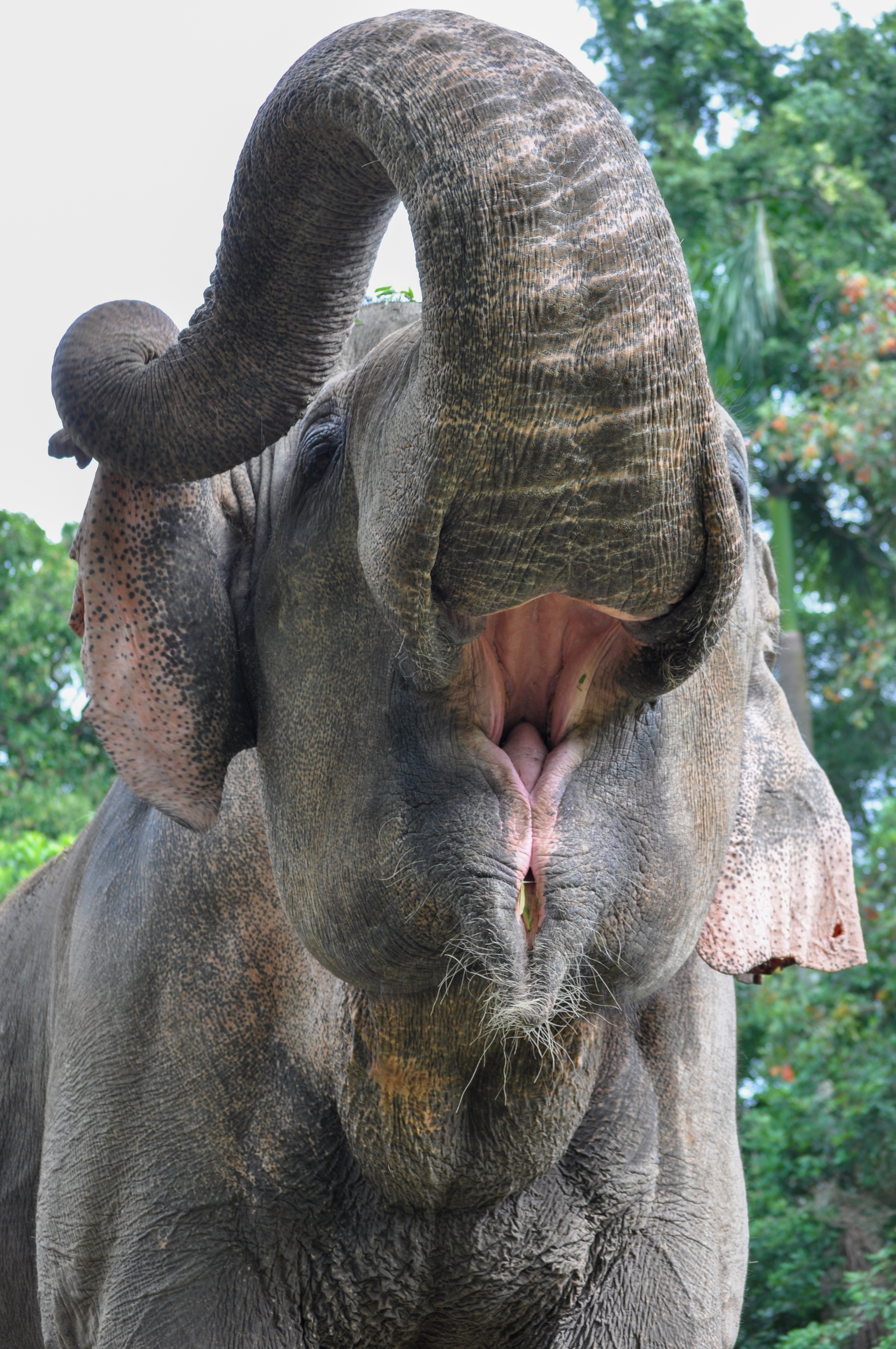Who doesn’t love a solid, reliable elephant? A favorite of children’s storybooks, endearing for their supposed fear of mice, and endlessly entertaining with those funky trunks. Now, new research has delved deeper into the mouthparts of elephants, helping us to understand more about how they feed and the whiskers they possess.
The three species of elephants are some of the biggest creatures on Earth and understandably, have to eat a lot to support their large energy requirements. Like other creatures that have specialized feeding morphology, such as the long finger of the aye-aye or baleen plates in whale species, the role of the elephant’s trunk is well known. However, the actual mouthpart, including the lower lip and associated whiskers, has been somewhat overlooked by scientific studies.
Most mammals possess whiskers of some kind on their face, called facial vibrissae. One type of these whiskers is known as buccal vibrissae, which are split into two groups: mystacial vibrissae, which are found on the upper lip, and submental vibrissae, which are found on the lower lip.
In mammals, mystacial whiskers are usually the most common. As elephants’ trunks are the result of fusion between the upper lip and the nose, they feature mystacial vibrissae – but they also have lower lip vibrissae. Until now, however, little scientific attention has been paid to this area in favor of the more famous trunk.
Through analyzing photographs, videos, and post-mortem samples of elephant mouths, the team behind the new study determined that typical mammalian patterns involving vibrissae are inverted in elephant mouths.
On the sides of the lower lip, elephants have two dense arrays of short whiskers called microvibrissae at the sides and a less dense area of long whiskers called macrovibrissae in the middle.
The study also revealed that the whiskers are damaged on the side that the elephants feed on most frequently and that the lower jaw of an elephant is much narrower in width, but elongated compared to other mammals.
Here, the long whiskers at the front can be seen with shorter whiskers along the sides of the lower lip.
Image credit: Yohanes01/Shutterstock.com
“I have studied whiskers all my life, but I have never seen a mammalian mouth like this,” said study director Professor Michael Brecht from Humboldt-University Berlin, Germany, in a statement seen by IFLScience.
All of these combined modifications, including the whisker placement, seem to be in response to the evolution of the trunk, and elephants’ unusual method of eating, explain the authors. Most animals insert food into their mouths from the front, but elephants use their trunks to insert food from the sides, hence their unusual whisker arrangement.
Elephants are also known to display what is called “trunkedness” in a similar way to how humans can be left or right-handed, and demonstrate an individual preference for which side of the mouth they feed on. This trunkedness is what wears down the whiskers on the side the elephants prefer eating on.
The study is published in Annals of the New York Academy of Sciences.
Source Link: Elephants Have Whiskers – But Where They Are Might Surprise You
